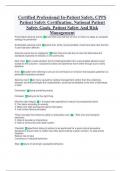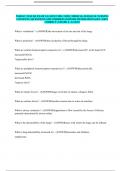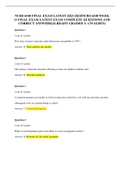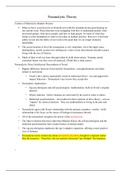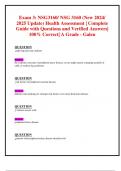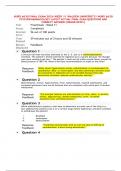Examen
Certified Professional In-Patient Safety, CPPS Patient Safety Certification, National Patient Safety Goals, Patient Safety And Risk Management
- Grado
- Institución
Certified Professional In-Patient Safety, CPPS Patient Safety Certification, National Patient Safety Goals, Patient Safety And Risk Management Certified Professional In-Patient Safety, CPPS Patient Safety Certification, National Patient Safety Goals, Patient Safety And Risk Management
[Mostrar más]
